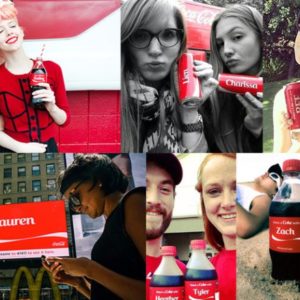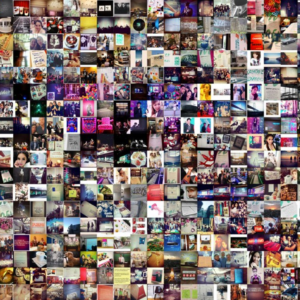More than ever, customers are now bombarded with brand messages. They are responding by becoming hyper-focused. Rather than watching adverts, they want deeper, closer and more interactive experience with brands. User generated content is one way brands are becoming more human.
It’s easy to see why user generated content has become the next version of “word of mouth”. In one study, 86 percent of millenials surveyed said user generated content was a clear indicator of the quality of a brand. A different study found that 68 percent of social media users between the ages of 18 and 24 made purchasing decisions based on what they saw on social media.
What is User Generated Content?
 People have been sharing stories about brands for decades. However, technology has changed how we tell stories today. User generated content is any type of content created by a consumer which becomes part of a brand’s assets.
People have been sharing stories about brands for decades. However, technology has changed how we tell stories today. User generated content is any type of content created by a consumer which becomes part of a brand’s assets.
Social media followers, expert content creators and influencers can create all sorts of content that a brand can use.
Why Your Brand Needs User Generated Content
A marketing strategy that has user generated content has several benefits.
Better engagement: One study found a 28 percent increase in engagement with user generated content in product promotion videos. In addition to this increased trust, consumers are twice as likely to share this type of content with their social circles.
Improved relationship with consumers: Over 50 percent of consumers trust content created by others. Giving them access to this content helps humanise your brand and creates trust.
Higher organic traffic: User generated content provides an opportunity for people to learn about your brand and visit your website. This can be a great source of website traffic.
Increase in conversion rates: Findings showed a 4.6 percent increase in conversion rates when consumers interact with user generated content during the shopping cycle.
Growth of social base: User generated content typically attracts a lot of attention. People want a good deal, a challenging contest and a place where like-minded people are holding interesting conversations.
How to Make the Most of User Generated Content
[easy-tweet tweet=”While user generated content is popular, not many brands are getting it right.”]
Their results are poor on key metrics such as engagement, conversion and return on investment. So, let’s look at some key requirements for user generated content:
Choose the Right Type of Content
 Assuming you’ve laid out the brand goals and objectives for your content strategy, you’ll next decide on the type of content you need to achieve these goals:
Assuming you’ve laid out the brand goals and objectives for your content strategy, you’ll next decide on the type of content you need to achieve these goals:
Earned channels:
Brands shape and sustain conversations by inspiring users to create and share content on earned channels. Examples include theme-specific social media content, product reviews and ratings. Feature these on relevant websites by an influencer targeting a specific demographic (think working with YouTube and other social media stars for product reviews etc).
Lowes #FanFixInSix is a superb example of a content campaign run on an earned channel. Lowe’s engaged its fans on Twitter asking them to come up with DIY how-to-clips. The result was massive engagement. Users sent in compelling content on how they use their Lowe’s bought tools.
Owned media:
Owned content such as social media pages, websites or newsletters can be humanised with user generated content. Use videos or photos on your website. Show real life customers using your product or services. In addition, consumer photos, reviews and ratings on product pages or curated microsites for specific campaigns where consumers’ stories are featured all work well.
In an effort to attract people to the Great Barrier Reef, Tourism Queensland placed an ad on its website and social media. It asked people to apply for “the best job in the world” as a caretaker of a tropical island in the Great Barrier Reef. The viral campaign saw up to 35,000 people create video applications and then the public voted for the winner. The result? 55 million pages views, 8.4 million unique visitors and up to $368m in media coverage. A great result from a quirky low cost campaign.
 Paid channels:
Paid channels:
These include paid social, print, TV and digital media. Using user generated content through paid channels allows for reach and content targeting. It involves engaging consumers with content that is highly relevant to them. Content ideas include TV or print ads featuring content created by fan, ads endorsed by a celebrity or paid social media that promotes videos or photos created by a fan. Be creative in your marketing and you’ll be rewarded.
WCRS created a campaign for Santander UK featuring colourful video footage from users. Santander asked customers to record clips every day and then edit them into a film. The theme was “prosperity is not just about finances” The popular campaign was showcased as a 60-second TV, on Snapchat, VOD and as digital out of home.
Under Armour launched a global campaign called “Unlike Any” celebrating women. The empowering tag #unlikeany trended on Instagram for some time. It focused on the achievements of female athletes to remove gender from the dialogue and showcase women’s contributions on their own merit.
Below you can see one of the videos that featured during the campaign with Lindsey Vonn. There were also more campaign videos featuring Misty Copeland , Natasha Hastings, Alison Désir, Jessie Graff, and Zoe Zhang.
Set Clear Guidelines for Content Submission
 Just because consumers are creating the content does not mean that you should give up complete control of the process. Through strategic directives, brands can shape conversations around specific teams. This ensures that the content aligns with the campaign goals.
Just because consumers are creating the content does not mean that you should give up complete control of the process. Through strategic directives, brands can shape conversations around specific teams. This ensures that the content aligns with the campaign goals.
As you search for user generated content, provide your community with examples of content for inspiration. Be specific about the type of content you want and make sure it’s good quality and relevant content.
Instead of settling for mediocre pictures, videos or audience, take time to source for content that is compelling and that truly reflects your brands.
Partner with Expert Content Creators
Working with influencers can be a great plus. These content creators have a large following. In addition, they also have a knack for identifying and developing content concepts. This can catapult your brand in the right direction. Some best practices for successful partnerships with content creators include:
- Provide them with guidelines about your campaign goals and your brand essence. But, give them autonomy for creativity.
- Work with content creators whose dominant themes align with your brand story.
- Offer them value in return. In addition to monetary compensation, help content creators indulge their own interests as well. For example, by amplifying their brand through your own paid, earned and owned channels.
Summary
A key goal of user generated content is building trust, credibility and sense of community. Offer consumers the chance to connect with new people through meaningful conversations. This will successfully develop emotional connections and create long term customers.


 Paid channels:
Paid channels:



Leave a Reply